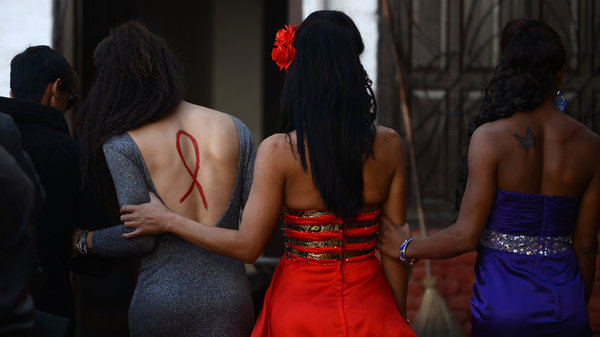
Transgender performers walk backstage during an event to mark World AIDS Day in 2013. A new WHO report demonstrates extremely rates of HIV infection among transgender women in 15 countries.
Prakash Mathema/AFP/Getty Images
سیستم بهداشت و مراقبت های درمانی در زن فراجنسییتی صورت درست و کاملی ندارد. همچنین نرخ اچ آی وی در این گروه از انسانها در وضعیت تکان دهنده ای قرار دارد.
Transgender people are not getting adequate health care, and widespreaddiscrimination is largely to blame, according to a recent World Health Organization report. And the story is told most starkly in the high rates of HIV among transgender women worldwide.
JoAnne Keatley, one of the authors of that study, puts it plainly.
“Just shocking rates,” she tells NPR’s Arun Rath. “There was a recent meta-analysis demonstrating that a transgender woman was 49 times as likely to be living with HIV [than the general population] in 15 countries in which data was looked at and analyzed.”

